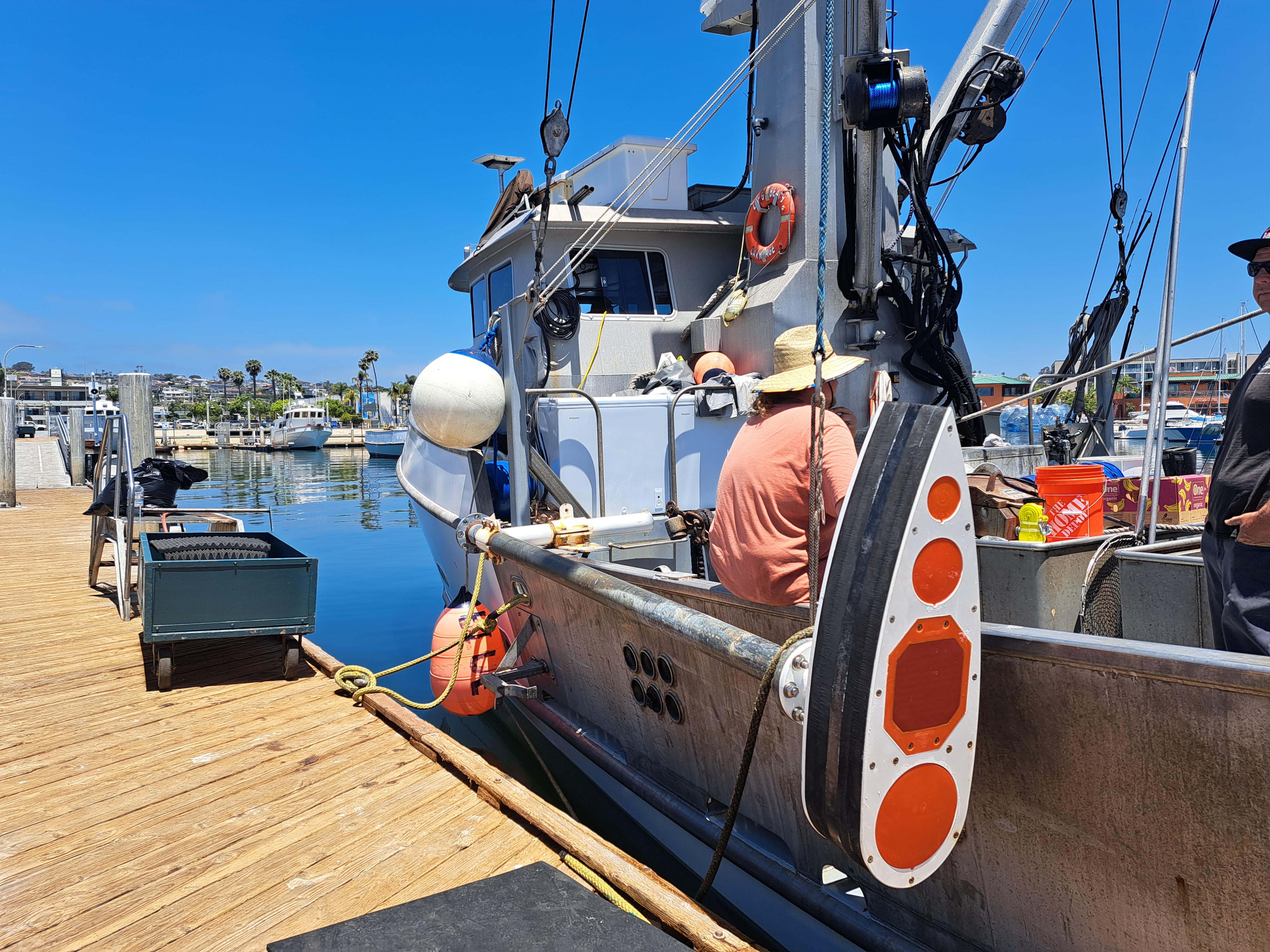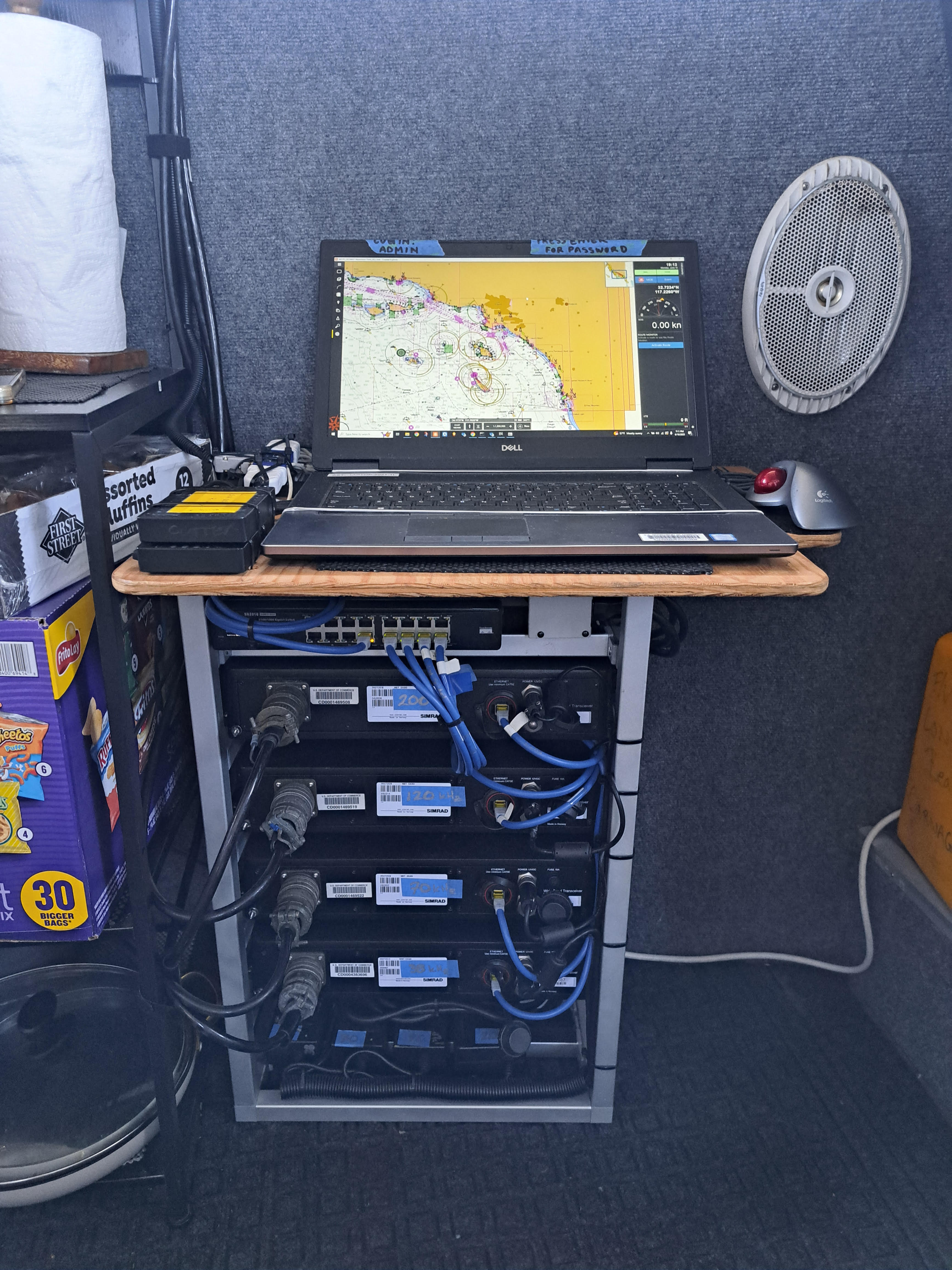Nearshore Acoustic Systems
NOAA Ships are used to survey the distributions and abundances of coastal pelagic fish species (CPS), herring, and hake, their prey, and their biotic and abiotic environments in the California Current between San Diego and Cape Flattery. Routinely, NOAA Ships will only survey in water depths greater than ~ 20 to 30 m, and therefore may potentially under-sample CPS, herring, or hake aggregations in the shallower, nearshore area. Therefore, to extend the sampling closer to shore, chartered nearshore fishing vessels will be used to conduct echosounder and purse-seine sampling as close to shore as safely navigable. The echosounder sampling will be conducted using the SWFSC’s four Simrad EK80 Wide-band Transceivers (WBTs) operating 38-, 70-, 120- and 200-kHz transducers installed in AST’s four-transducer array (MTA-4).

Preparing for Mobilization on a Nearshore Vessel:
- All gear needed for the F/V Long Beach Carnage is located on the LBC Equipment List. This list should be updated annually with each mobilization.

